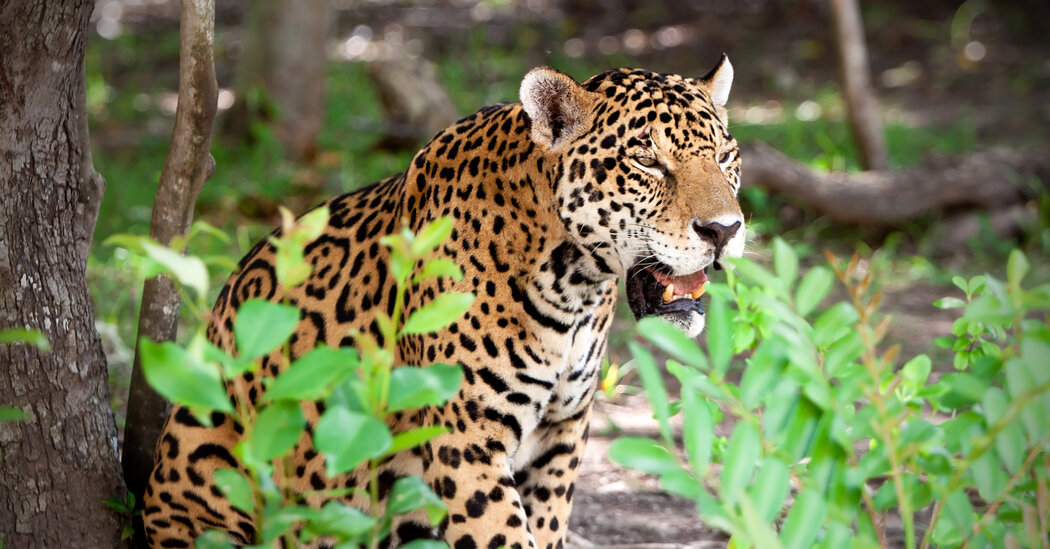From the top of the great pyramid of the ancient Maya city of Calakmul in the southern Yucatán Peninsula in Mexico, you can see all the way to Guatemala. The jungle stretches out infinitely in every direction, an ocean of green punctuated only by the stepped pyramid peaks of two other Maya temples.
When I was there in March, there were hardly any other visitors. Calakmul was once one of the largest and most powerful cities of the Maya world, but now it stands in ruins, hours from the nearest urban center and enveloped by the Calakmul Biosphere Reserve, one of the biggest swaths of unbroken tropical forest in the Americas.
It was early evening, and the black howler monkeys were waking up. From under the forest canopy came the guttural, trash-compactor roar of the loudest land animal in the world, one of many endangered species that live here, along with pumas, toucans, spider monkeys and coati-mundis. Perhaps most crucially, the jungle of Calakmul is home to the highest concentration of jaguars in Mexico.
Jaguars are elusive animals that, if threatened, can lacerate a skull with a single bite. Even highly skilled trackers need many days, if not weeks, to find jaguars in the wild, and I knew it was unlikely I would come face to face with one. The main goal of my trip to Calakmul was to explore the habitat where the jaguar was newly thriving, to get a better understanding of its significance and the environmental pressures it’s facing, and to talk to some of the important players behind efforts to save the species.
Still, I stared down into the vegetation, hoping for a flash of black and gold, for any flicker of the great jungle cat that has enthralled this part of the world for thousands of years.
Back from the brink
The Maya, like other ancient civilizations of Mexico, worshiped the jaguar as a deity, believing that it ruled the underworld and could move between worlds at will. Across pre-Columbian cultures, jaguar images appear on masks, thrones, reliefs and sculptures. Ancient rulers and warriors adorned themselves with the animal’s skulls, skins, fangs and claws. For 3,000 years, no animal was more symbolically important.
When archaeologists excavated Calakmul in the early 20th century, they uncovered the tomb of its greatest ruler, known as Jaguar Claw. Nearby settlements have entire temples devoted to the animal, whose range once stretched across the Americas, from present-day Maryland to the Pacific Northwest to the tip of South America.
Hunting,…
Click Here to Read the Full Original Article at NYT > Travel…
